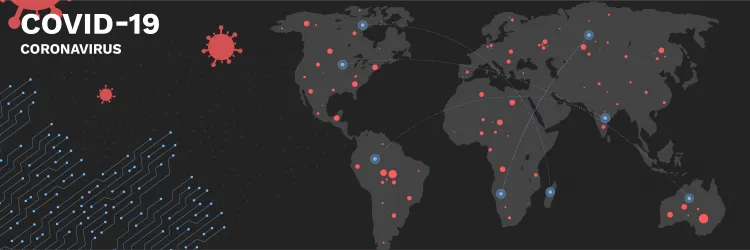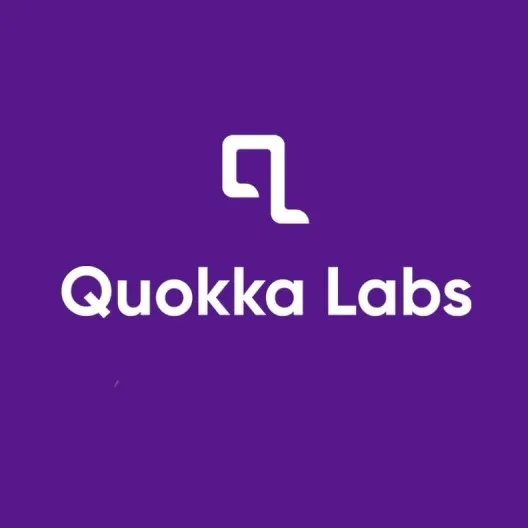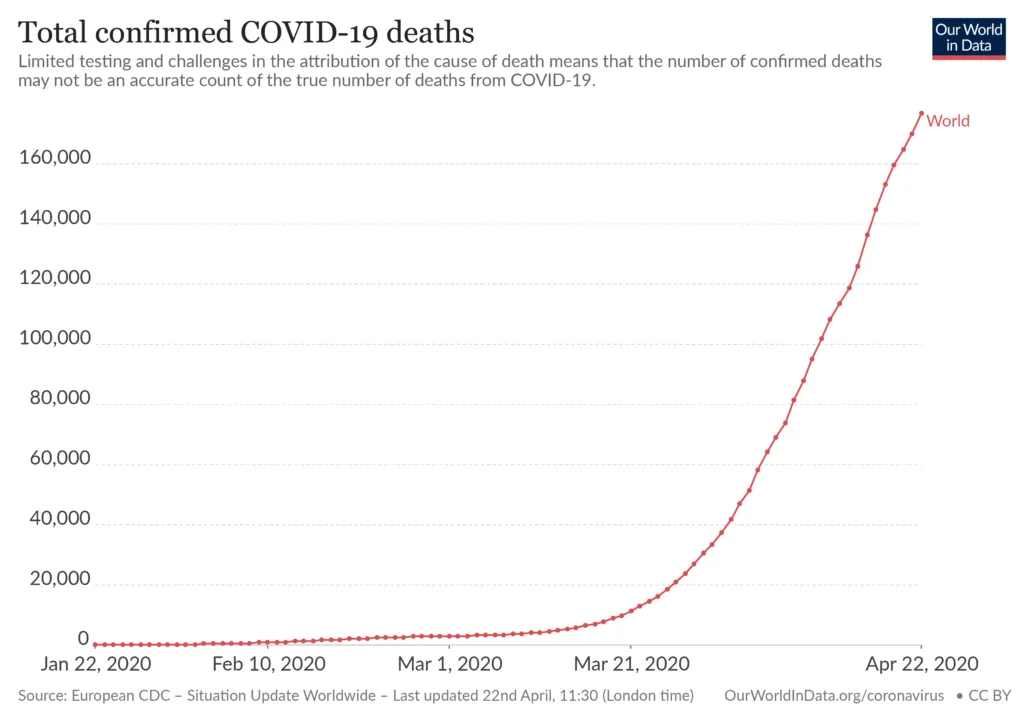Technology


3 min


As the COVID-19 pandemic continues to devastate the world, the IT industry is stepping up to the challenge. This article explores the ways in which technology can be used to address the COVID-19 crisis, from contact tracing to telemedicine. Discover how the IT industry is contributing to the fight against COVID-19 and the potential for technology to make a difference.

By Quokkalabs LLP
23 Apr, 2020
Flatten the curve has been one of the hot slogans trending worldwide during this COVID-19 Pandemic. Traditional tools from Cholera and Spanish Flu to Ebola and the SARS virus definitely couldn't suffice this time. In this hour of need, Information Technology almost empirically empowered our fighting capability. Such an extensive data management system helped me realize how technocracy can benefit humanity.
A brilliant specimen can be the 1000-bedded Huoshenshan Hospital in China, built just ten days after this emergency. Digital tools like BIM (Building Information Modelling) made this short deadline possible, helping in accurately planning and designing the initial model within 60 hours. Then monitors were placed to coordinate thousands of machines on-site in real-time, giving a productive output.
South Korea has also shown its prowess in information technology mechanisms during this Pandemic. Initiating its research as early as 16th January, Seegene, the major biotech company there, developed the test kit in just three weeks. The question is how they could respond to a disease so fast. The answer is simple. It lies at the base of the company's research facility in Seoul that houses an AI-powered extensive data system that doesn't require patient samples.
Instead, it uses the genetic identity of the virus open-sourced by WHO officials to process the detection tool: Allplex 2019-nCoV Assay. Their production has risen to 1 million per week, with orders coming from Germany, Spain, Italy, and all across Asia. Seegene is drafting more scientists in this drive and has even offered to disclose this Technology soon.
The research fraternity worldwide has reported several possible ways of containing the virus. The information isn't limited by geographic or national boundaries anymore. A rapidly mutating RNA virus-like n-COVID requires a broad-spectrum approach, as seen from the continuously changing guidelines from the World Health Organisation (WHO) itself based on the numerous tests being conducted across the globe.
 Total confirmed COVID-19 deaths | Source: European CDC[/caption
Total confirmed COVID-19 deaths | Source: European CDC[/caption
The medical world is still split as to whether the pathogen is air-borne or if plasma from a healed COVID-19 patient can be used to treat others. Keeping this in mind, the White House approved an initiative, CORD-19, with numerous research centers like Seattle's Allen Institute for Artificial Institute, Microsoft, and others.
Using natural language processing is computing through tens of thousands of research papers at an unprecedented pace. These publications grabbed over 5,94,000 views and One hundred eighty-three analyses within four days of release. This exercise resulted in recreating the genome sequence within a month, compared to the same practice taking several months of investigation in the case of the SARS epidemic.
Transformative Med, a US-based start-up that transforms electronic health records (EHR), has developed the Core COVID-19 app to enable frontline healthcare workers to monitor the stats of the patients as hospitals around the world are experiencing a massive surge of cases.
Another start-up, MDmetrix, has developed control charts integrating data from the New York Times to give real-time analysis of changing death curves. SIntelligenttools like these are becoming the friend of humanity, giving healthcare systems a whole new dimension in these tense situations.
Much of the world's success in containing the spread lies in the deployment of intelligent systems to track the outbreak to the level of people-to-people movement accurately. South Korea already had a 'Quarantine Information System' that recorded every possible medical detail and travel history of an incoming passenger, which helped the frontline healthcare workers provide the necessary treatment. Robust surveillance systems have reached our doors too. Using AI-powered software like Microsoft's Healthcare Bot Service, citizens can self-assess their medical health at home and get virtual reports on their smartphones.
China's province Hangzhou developed a Health Code app that explicitly uses this feature, giving 3-scale color indications based on the user's virus-related health history, whether the user is an active carrier or not. These simple screening tools prevented non-essential hospital visits, thus mitigating the risks of cross-infection. Similar developments have started to take shape in India too. The National Informatics Center (NIC) has developed the Aarogya Setu app that informs the user of the nearest virus-infected patient, helping social distancing digitally.
Cross-sector production is one hurdle experienced by any administration that wants to increase product sales of essential commodities in an emergency like this. Equipping the think tanks with efficient communication systems scales down this problem. Numerous investment giants are venturing into ed-tech, delivery, and B2B firms, eyeing lucrative turnovers that will fuel the growth in profitable markets.
These services have proved to be the survival drug for the many service-based start-ups and companies to run during this lockdown period. While digital collaboration tools like Slack, ProofHub, and Flowdock make life more comfortable for employees and employers, academia has smartly avoided hitting the dead-end by choosing Technology as the weapon of study.
Long-distance teaching is no more a hurdle with online streaming platforms like Google Classroom, Zoom, and Cisco Webex. Tencent Conference has reportedly added around 1,00,000 Cloud Hosts within just eight days between 29th January and 6th February. With the manufacturing sector getting fed seamlessly by local and global service-providing agencies, the cross-sector problem is erased easily.
The information industry shall continue to mine every possibility to warm and brighten our living. Governments, administrative headquarters, industrial corporations, and the people are working collaboratively to eradicate this virus, as evident from how China, South Korea, and other prosperous countries have flushed out this nuisance from their land. Thanks to the digital revolution, which has made this world look smaller through its state-of-the-art tools, thereby simplifying solutions through Innovations.
How to Use Augmented Reality in Retail to Boost Customer Engagement and Sales
By Sannidhya Sharma
5 min read
How to Use Augmented Reality in Accounting to Build Smarter Financial Apps
By Dhruv Joshi
5 min read
Top 10 Enterprise App Development Companies for Scalable Business Solutions
By Dhruv Joshi
7 min read
How to Build a Scalable Video Streaming App Like Netflix: A Step-by-Step Guide
By Dhruv Joshi
5 min read

Technology


5 min
Augmented reality in retail helps brands drive sales and reduce returns by transforming how customers discover, try, and buy products. This blog is your guide to using AR strategically, from choosing the right use cases to launching cost-effective AR experiences that delight customers and differentiate your brand.


Technology


5 min
The demand for high-quality video streaming apps has exploded, and it's not just Netflix leading the charge anymore. From niche platforms to corporate media ventures, businesses everywhere are realizing the massive opportunity in OTT app development to launch their own video streaming application.


Technology


5 min
The demand for video streaming apps has exploded in recent years, driven by faster internet, affordable smartphones, and a content-hungry audience. From binge-watching TV shows on OTT platforms to engaging with creators in real-time through streaming apps, users today want instant, seamless, and personalized experiences. But here's the thing, not every streaming app makes it big. Only a few rise to the top. So, what sets them apart?


Feeling lost!! Book a slot and get answers to all your industry-relevant doubts